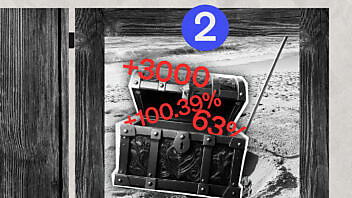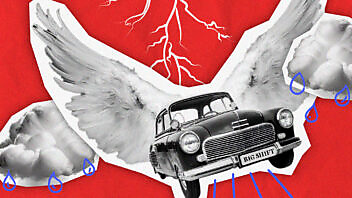Witness the new IT buyer! Software acquisition’s no longer only for CIOs. We look at new IT buyers broken down into archtypes, and how to market to them…

When I look around, I see two fundamental changes happening in IT-land:
1) Consumerization’s overthrowing the best-laid plans of CIOs, and
2) Enterprise software’s become the belle du jour of VCs and tech bloggers.
I’d cite those points, but I’m sure I don’t need to. What do these changes mean, though? I mean, more than the obvious: Consumer technology’s crashing the workplace party and enterprise startups are seeing sick valuations.
For anyone marketing technology to enterprises, I’d argue it means you need to flip your ideas about the market; in fact, I’ve been arguing it – alot. Stop marketing to buyer committees in 18-month purchase paths. Start marketing to dudes who need to do something, like, now and want a simple piece of software to do that.
Stop marketing to CIOs, as if they had the keys to the empire. Start marketing to a different kind of buyer, the kind of guy or gal who’s upending that empire without a moment’s hesitation. Start marketing to these godless barbarians.
Profile of a godless barbarian
Ever since I wrote about this buyer group, I’ve had people say “oh, yeah, the prosumer”, “you mean the social B2B buyer?” or “welcome to the consumerprise.” Yes, yes and yes, but there’s more to it than that.
Late last year, Chris Dixon delighted in SAP’s purchase of SuccessFactors, citing cloud’s superior architecture because it “starts to remove IT from the purchasing process, meaning the user and the buyer are, increasingly, the same person.”
Intriguingly, the comments to that short post shared a delightful little anecdote: “Groups in enterprise went ‘rogue’ and started using it [Salesforce] with small teams. Then Salesforce was able to approach a company after x number of groups were using it to convert them to a more economical bulk price package.”
In this model, the cost of sale dwindles to zero, and the cost of marketing shoots up. Venkatesh Rao outlined the changing B2B sales pattern eloquently, describing a transition from the plodding B2B hunter sales persona to “death from inside”, when salespeople simply upsell a product that’s already saturated the organization.
But we need to start seeing enterprise software buyers with a finer sense of nuance. Roughly, these godless barbarians may come from different tribes:
The Vandal Fanboys: Anyone with peers who are using the cooler cloud apps, and wants to be in on the game (but probably fears discovery by an admin – “What? Skype? Me? No, my girlfriend must have installed that.”)
The Visigoth Datasloths: Those professionals who are not properly house-trained, and simply do it (use an app) wherever they find it and whenever they feel like it. Also known as marketers.
The Hun Young-uns: Those little devils born after 1980. They’re known to plug in to social business software as readily as they breathe. And they don’t read instruction manuals.
The Viking Sky-kings: These particular godless barbarians are on the move so much that they don’t even know or remember which particular application IT wants them to use for what anymore (or know what a desk looks like, for that matter).
Those are only the broad and obvious godless barbarian clichés. We know that there are hundreds more bands of rogue IT buyers.
How do you market to godless barbarians
The winners among those marketing to godless barbarians seem to prize a tool culture, rather than a platform play. They’re beloved by users, not gatekeepers. Any technology marketer would be wise to assess their base – user, or gatekeeper?
If you offer a single-user license, you have a ticket to market to godless barbarians; and when the likes of Karmasphere can offer business intelligence tools payable by the hour, anyone should be able to do a single-user license.
The next step is product development that’s more tribal than organizational. You’re developing a cultural product, not an overthought technical masterpiece. 37 signals is a great example. Dropbox is an exception – a technical masterpiece that spawned its own culture, and has become sticky as sh*t because of it.
The cloud has enabled product development that goes as fast as we want it to. Expect to see more and more enterprise tools popping up and nailing more and more discreet activities. And developers with clever marketing sensibilities who pitch products that hit the buttons of their specific kind of godless barbarian, whichever tribe that may be.
If you’re a tech marketer, you’ll soon be a marketer in the cloud, and you’ll need to know: Who are my godless barbarians? And how can I unleash them?

Enjoyed this article?
Take part in the discussion








Comments
There are no comments yet for this post. Why not be the first?